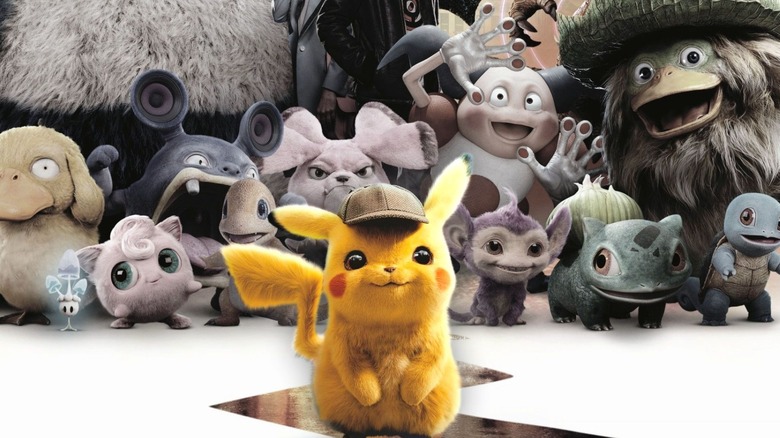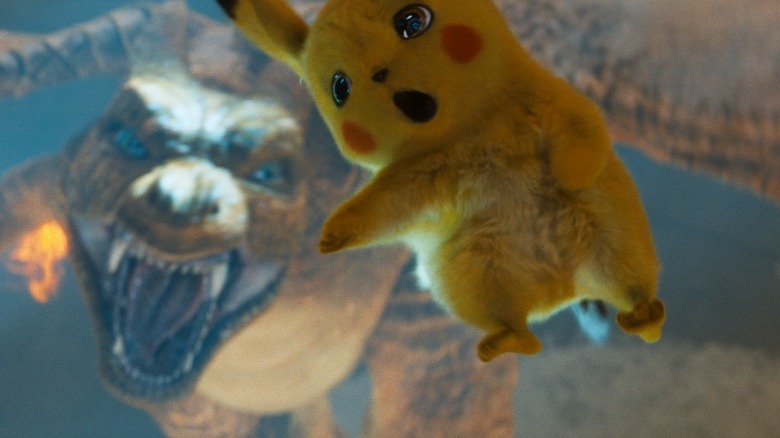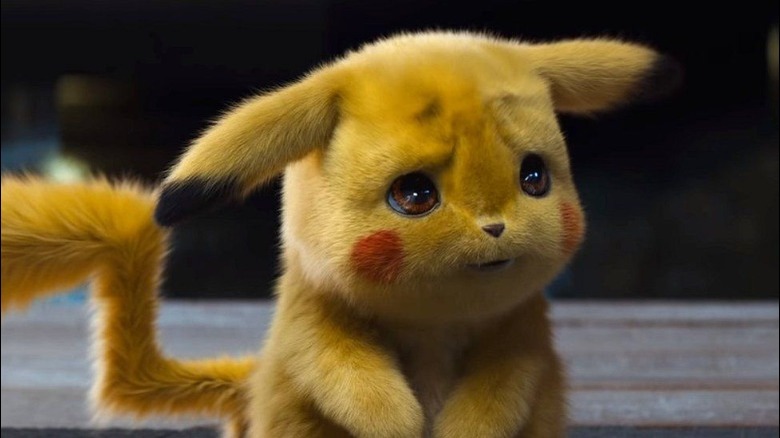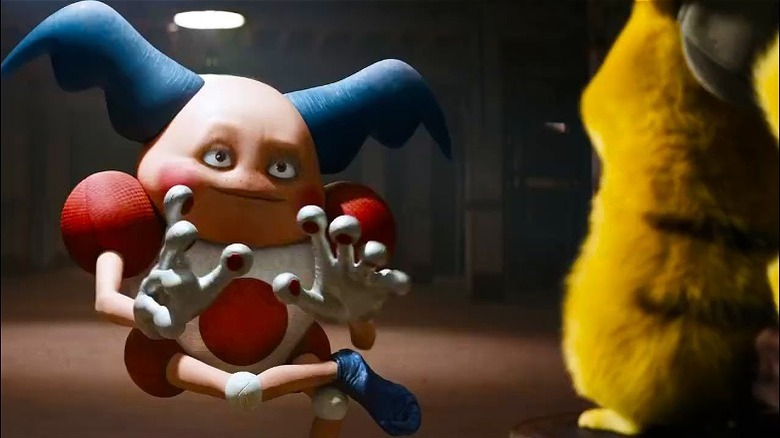Detective Pikachu Walked A Thin Line While Bringing Its Cartoon Characters To Life
The "Pokémon" video game franchise is filled with cuddly creatures that look perfectly adorable in their native video games and animated series, but the idea of bringing them to the real world seems off-putting. What may look charmingly quirky as an illustration or cartoon may be downright terrifying as a live-action monster. That's what made this exact task so daunting for the special effects team of "Pokémon: Detective Pikachu," who had to make sure their translations looked both appealing and realistically believable.
The very concept of "Pokémon" rests on the idea that the franchise's title creatures exist in a world where the sky is often the limit for their fantastical designs. There are Pokemon modeled after animals, plants, household objects, mythology, and sometimes even actual people. The design team behind "Detective Pikachu" was thus faced with the hurdle of adapting this diverse kingdom of imaginary beasts to a setting that was sufficiently real-world. Meanwhile, the Pokémon Company oversaw the film's visual artists to ensure that their creations weren't too dirty, gross, or unsettling. In other words, make them realistic, but not too realistic.
Painstaking Pokémon
Everything the design team sent back to the creators at the Pokémon Company needed to meet the standard of "kawaii," the marketable cuteness that Pokémon (especially Pikachu) have been emblematic of in its native Japan. Constant communication between the company and the film's artists meant that there were significant design changes as materials were sent back and forth between countries. In order to tow this fine line, the film's artists modeled their Pokémon after animals, consulting zoologists and drawing muscular and skeletal systems in order to accurately create a live-action replica.
Textures were also a vital part of the design process. The original Pokémon designs look mostly smooth in animated form, but the team needed to carefully pick out individual surfaces from the real world in order to make the Pokémon in "Detective Pikachu" seem real. Director Rob Letterman talked to Thrillist about the challenge of making Pokémon that seem tangible:
"We had to find a language beyond English or Japanese to communicate what the Pokémon photoreal textures would be. Our concept designers had teams basically create these texture sheets. We built a library of reference sheets per Pokémon, so it had the original drawing in the middle and then photographic references of all the things from the real world, the natural world, that could make up the surface details."
A very furry Pikachu
Out of all the Pokémon to make it into "Detective Pikachu," it was the film's titular character and the franchise's poster child that unsurprisingly received the most attention. Initially, the Japanese side wanted to make the mouse-like Pikachu with a smooth surface, closer to what he looks like in the visual source material. However, the effects team insisted in a furrier design in order to make the character more huggable. Visual effects supervisor Erik Nordby spoke of the importance of Pikachu's fluffy exterior in an interview with Time:
"The fur question was huge. The Pokémon Company wanted something that felt like a horse, like a very sheeny short fur that basically felt like no fur. But we felt that if it's not furry, it would be the most disturbing thing in the world, because it would be this hard-surfaced yellow thing. If it's going to have any sense of kawaii there has to be a level of fur."
Did they catch 'em all?
Another notable challenge for the design team was Mr. Mime, a Pokémon that the folks over at the Pokémon Company didn't even want included in the movie. When asked what the strange humanoid was even supposed to be, they responded, "We don't know." But Letterman believed that Mr. Mime fit inside the film's noir parody tone by providing a touch of weird, playful dark humor in an interrogation scene, so he moved forward with a visual design. The result is a mix of varying textures that includes foam and rubber, with cotton gloves for hands. Luckily, Mr. Mime's appearance is a standout scene.
The final forms of the Pokémon in the film may have met varying degrees of success. Jigglypuff, a Pokemon who ranks among the most popular, was a hotly debated creation, but its tuft of fur makes its angry pout look all the more endearing. On the other hand, the Pokémon Company was reportedly unenthusiastic about Lickitung's wet, slimy, oversized tongue, according to Nordby.
In the end, no one can deny the admirable focus to detail that the visual artists provided even to background appearances of the Pokémon within "Detective Pikachu."



